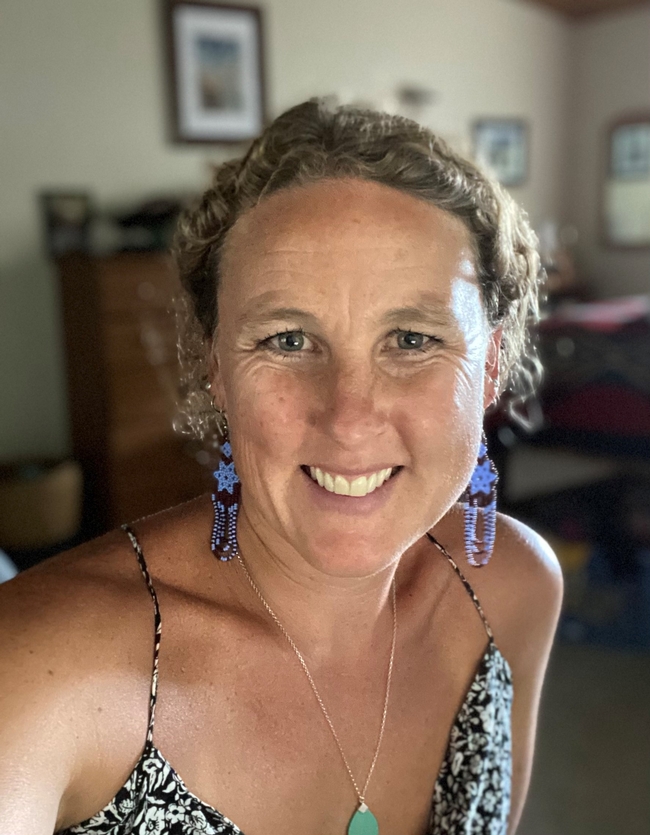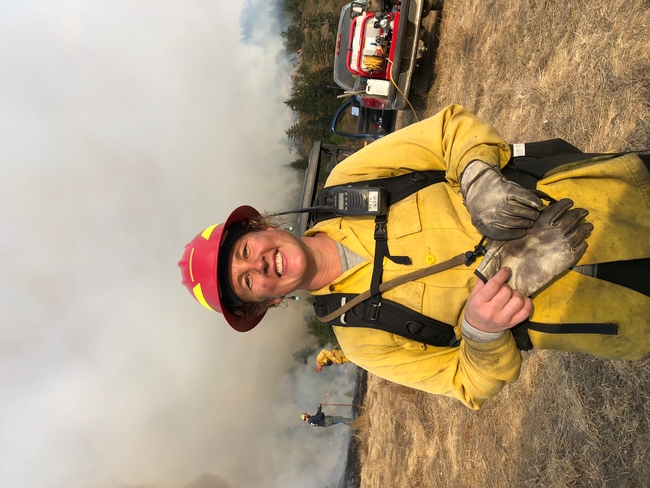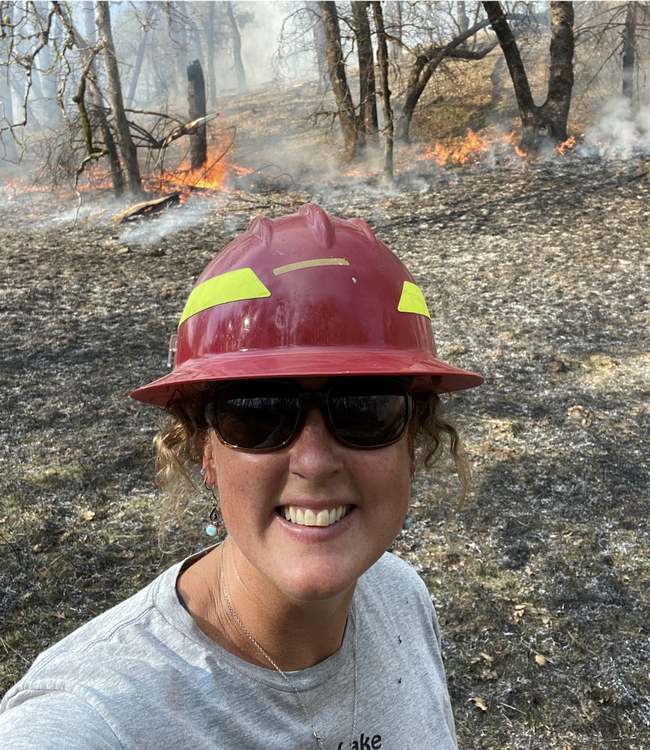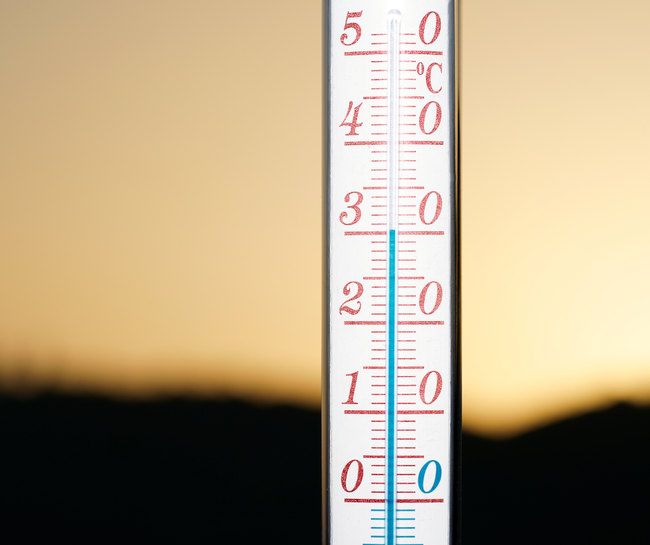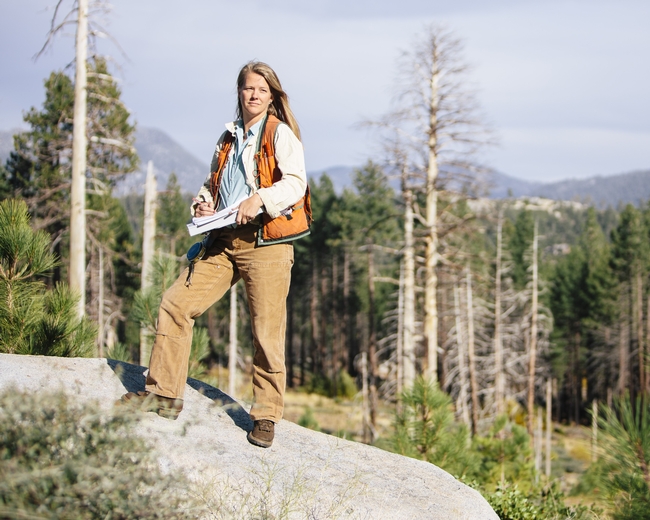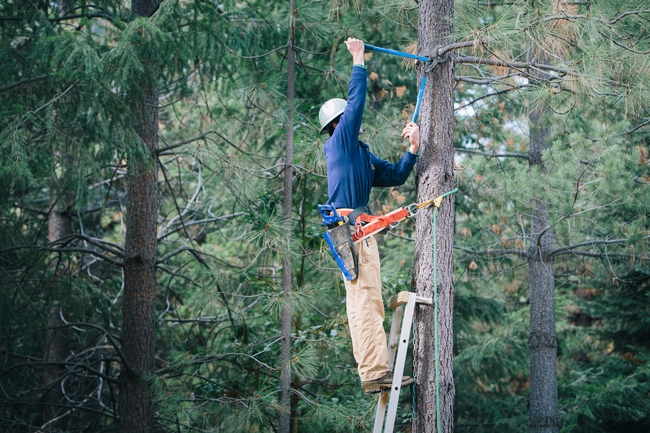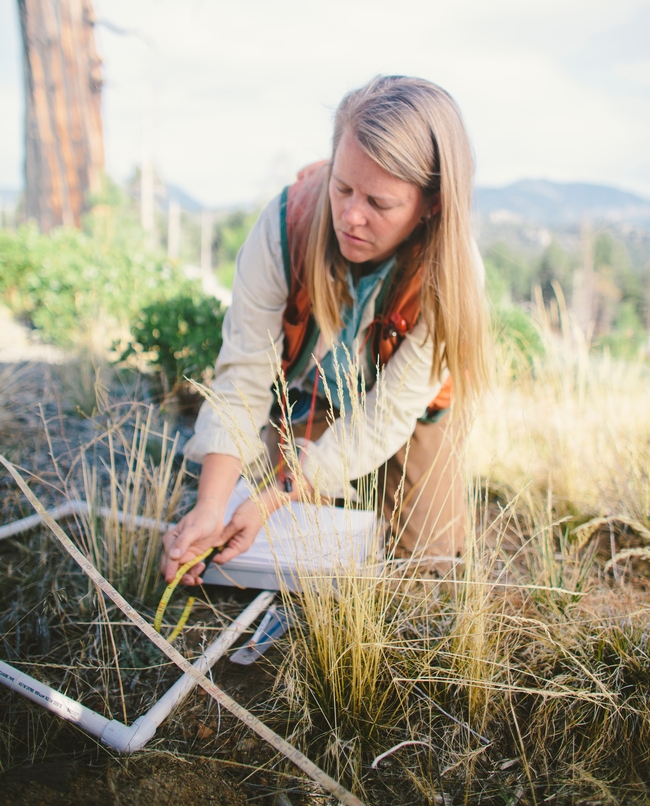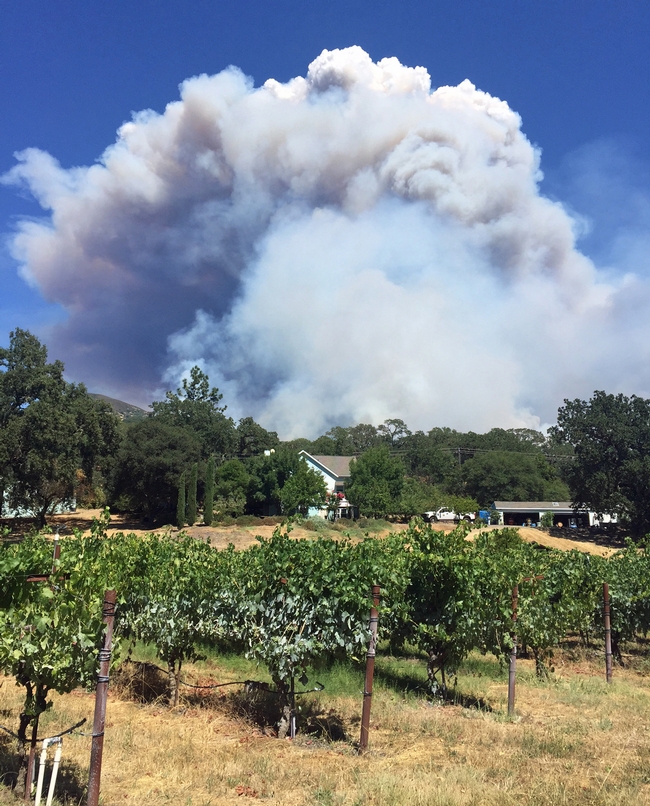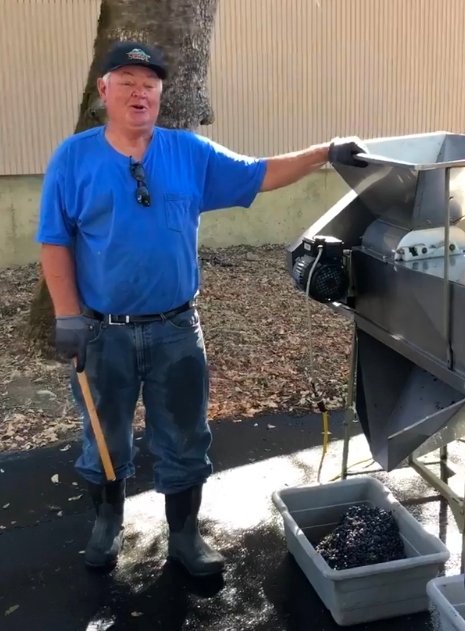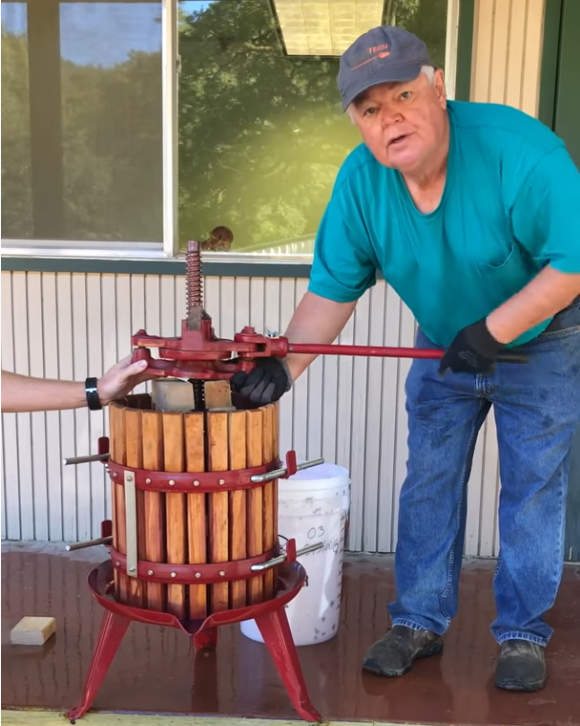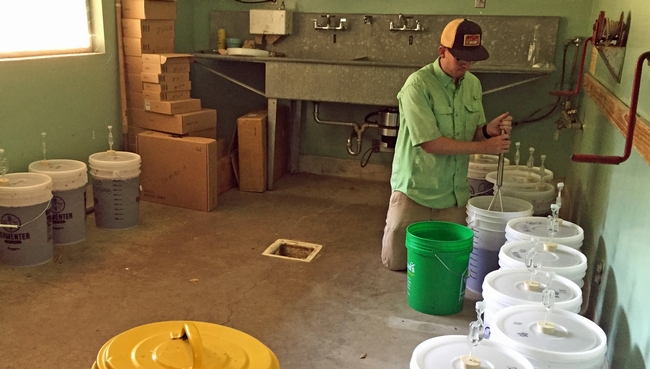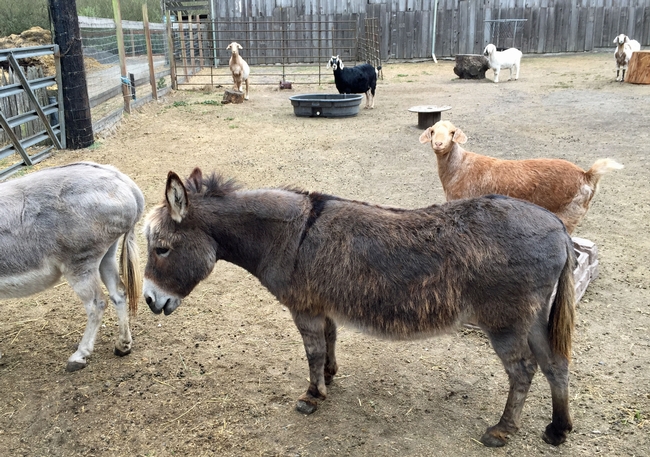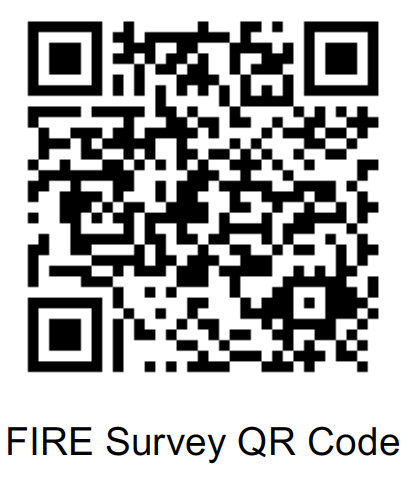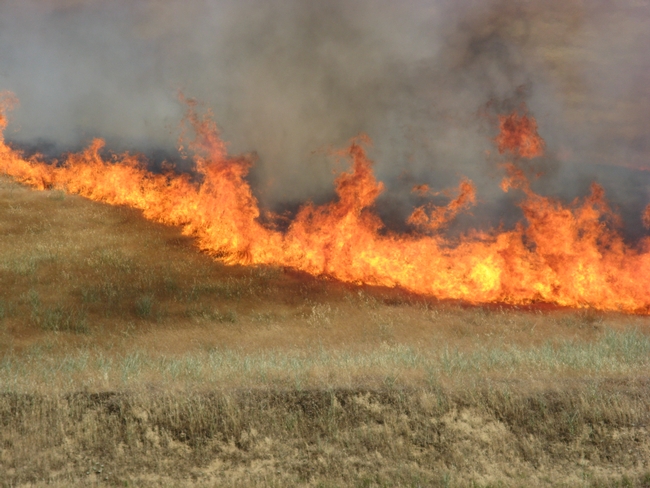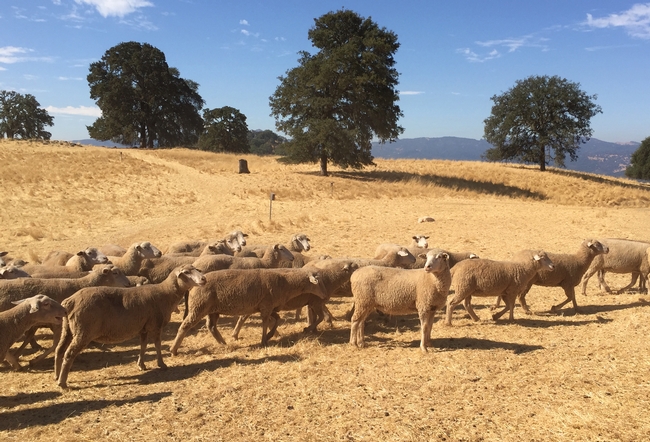Posts Tagged: wildfire
Quinn-Davidson to lead UC ANR Fire Network
Lenya Quinn-Davidson has been named director of the University of California Agriculture and Natural Resources' Fire Network, effective April 1. UC ANR's statewide Fire Network will build connections and capacity among UC ANR scientists, practitioners, land management and regulatory agencies, policymakers and communities to work toward fire resilience in California.
Wildfire has become more frequent and intense in California with climate change. To meet the challenge of wildfire, UC ANR has hired several new UC Cooperative Extension fire advisors and staff to study issues related to wildfire and to assist Californians with their preparations. Quinn-Davidson and the Fire Network will provide critical coordination and connection across geographies and disciplines ranging from forestry to food safety to livestock to water quality.
“Lenya has more than a decade of work in fire science and has carried out her work through partnerships and community engagement,” said Glenda Humiston, UC vice president of agriculture and natural resources. “Her experience and successful track record will enhance how we coordinate our many layers of research and education related to fire prevention, recovery, public policy and workforce development.”
Quinn-Davidson has served as a UC Cooperative Extension fire advisor for the North Coast since 2016. During her three-year term as the Fire Network director, she will continue her research program and continue to build capacity among landowners, tribes and other communities to use prescribed fire throughout the state. Quinn-Davidson also leads the national/international WTREX program, focused on empowering women and other underrepresented people who work in fire.
“I'm honored to take on this new role, and I can't wait to further grow, connect and support our fire efforts within UC ANR,” Quinn-Davidson said.
UC ANR's Fire Network will also enhance communication.
“The network will increase the flow of information to improve how we conduct academic research, strengthen local efforts by sharing relevant data and ideas, create and build capacity for different management techniques and tools, and facilitate new research and programming related to diverse facets of fire in California,” said Deanne Meyer, UC ANR interim associate vice president.
Before becoming a UCCE fire advisor, Quinn-Davidson worked on fire projects for five years as a UCCE staff research associate. Since 2009, she has served as director of the Northern California Prescribed Fire Council. Prior to joining UC Cooperative Extension, she was a research assistant in the Wildland Fire Laboratory at California State Polytechnic University, Humboldt and worked on stream restoration for Bioengineering Associates, Inc.
She earned a master's degree in social science, environment & community from Cal Poly Humboldt and a bachelor's degree in conservation and resource studies from UC Berkeley.
Quinn-Davidson, who has published more than 70 peer-reviewed and popular articles, will be based in Humboldt County. Follow her on Twitter @lenyaqd.
Disaster resources available to prepare for heat, wildfire, power outages, quakes
September is National Preparedness Month, designated to encourage disaster and emergency readiness. To help Californians prepare for extreme heat, earthquakes, public safety power shutoffs and wildfire, University of California Cooperative Extension has created a disaster preparedness website organized for quick access to critical information.
The website https://ucanr.edu/Disaster contains fact sheets with tips for getting prepared.
“Unfortunately, with a warming climate, we are facing more and more extreme climate-related events such as heat waves, wildfires, power shutoffs and storms. All Californians need to step up their preparedness efforts to be ready to meet this more uncertain future,” said Susan Kocher, UC Cooperative Extension forestry advisor, who co-authored the disaster preparedness resources for the website.
Extreme heat
The fact sheet for extreme heat events offers suggestions for avoiding heat exposure, such as identifying nearby cooling centers and covering windows to keep heat out. It also suggests things to do during hot weather such as staying hydrated, taking cool showers and keeping pets indoors. It describes symptoms of heat-related illnesses, which can have serious health effects.
Public Safety Power Shutoff
During extreme weather events, electrical power in high fire-threat areas may be shut off to prevent sparking. This precaution is known as a Public Safety Power Shutoff. A PSPS is most likely to occur from May to November, when conditions are the hottest and driest.
UC Cooperative Extension recommends signing up to receive PSPS alerts from your energy company. Experts also advise making a plan for medications that need to be refrigerated or medical devices that require power. To prevent foodborne illness, they offer suggestions for ensuring food safety during and after a power outage.
Wildfire and smoke
Wildfire smoke can harm your health. During wildfires, UC Cooperative Extension recommends wearing an N95 outdoors to reduce smoke exposure and taking steps to prevent smoke from entering buildings. To reduce wildfire risk, the website describes methods of removing flammable vegetation around homes.
Earthquakes
UC Cooperative Extension offers safety tips for before, during and after an earthquake. Identifying the safest place in your home during an earthquake in advance is helpful. For example, doorways are not the safest place to be in modern homes. Experts recommend crawling under a sturdy desk or table, while avoiding areas next to windows, beneath ceiling fixtures or near large items that may fall during an earthquake.
The website also offers resources on drought, food safety after a fire, and wildfire preparedness and recovery.
In 2020 and 2021, Cooperative Extension researchers from around the country held listening sessions with community members who had experienced extreme weather events and other types of disasters to learn what had worked well, what had not, and how communities could be strengthened.
In response, these disaster resources were developed by Kocher, UC Davis undergraduate student Caydee Schweitzer, Tracy Schohr, UC Cooperative Extension livestock and natural resource advisor, and Vikram Koundinya, UC Cooperative Extension evaluation specialist. The group plans to add fact sheets on more disaster topics in the future.
This project was funded by a USDA National Institute of Food and Agriculture Renewable Resources Extension Act grant.
MEDIA CONTACT: Susan Kocher, UC Cooperative Extension forestry advisor, sdkocher@ucanr.edu
Good Jobs Challenge awards $21.5 million for forestry, fire-safety jobs training
Butte, Feather River, Lake Tahoe, Reedley and Shasta community colleges, Chico State, UC ANR and Sierra Business Council to train workers for urgently needed work
California's forested, rural communities are suffering from record-breaking wildfires that burned 2.5 million acres and destroyed multiple communities in 2021 alone. To create well-paying jobs and improve forest health and fire safety, the Sierra Nevada and Cascade regions have received $21.5 million for a project that will strengthen the infrastructure for workforce development and increase access to those jobs for local community members from all backgrounds.
The project, funded by the federal Good Jobs Challenge, is being rolled out by the Foundation for California Community Colleges, California State University Chico, University of California Agriculture and Natural Resources, and the Sierra Business Council.
“There is so much work to be done in California to increase the resilience of forests and communities to wildfires and climate change, and there are just not enough trained workers to do all this work,” said Susie Kocher, UC Cooperative Extension forestry and natural resources advisor for the Central Sierra. “A recent assessment estimated upcoming shortages of 6,000 fire managers, 4,000 conservation scientists and foresters, 7,000 loggers and 1,500 utility line clearance technicians. California desperately needs skilled workers to fill those jobs to protect and rebuild communities in rural parts of the state. And these are well-paying jobs with benefits.”
The four-year project will help train and place qualified workers into high-quality jobs in the forestry sector, responding to urgent needs to build economic and climate resilience in California's forested, rural communities. Five community colleges – Butte College, Feather River College, Lake Tahoe Community College, Reedley College and Shasta College – California State University Chico, University of California Agriculture and Natural Resources and the Sierra Business Council are partnering on the project. This group has proven experience delivering effective workforce-training programs in partnership with industry and communities.
The emerging forestry and fire-safety sector has the potential to grow into a $39 billion industry. By working to recruit, support and train local community members in partnership with Hispanic-serving institutions, Indigenous-led partners and other community-based organizations, the project will expand the industry's talent pool while diversifying the field.
The “California Resilient Careers in Forestry” project is being awarded one of 32 grants from the $500 million Good Jobs Challenge funded by President Biden's American Rescue Plan and administered by the Commerce Department's Economic Development Administration.
“We are honored to be selected as one of the Good Jobs Challenge award recipients alongside a talented group of partners serving rural communities, including several of our California community colleges,” said Keetha Mills, president of the Foundation for California Community Colleges. “This work is critical to help Californians access good jobs, especially as we help our state respond to the urgent needs of climate change and support economic growth in regions greatly impacted by the COVID-19 pandemic and natural disasters.”
Where there is fire, is there smoke flavor in winegrapes?
UPDATED: Viticultural area is Kelsey Bench, not Kelseyville Bench.
UC Cooperative Extension study shows smoke damage to grapes not uniform across vineyards
By the time the Mendocino Complex Fires were officially contained on Oct. 4, 2018, five weeks after igniting, they had burned approximately 450,000 acres in Colusa, Lake, Glenn and Mendocino counties, making it the largest wildfire in California history, according to CalFire.
The fire not only destroyed 280 homes and other buildings, its smoke destroyed the market for wine grapes grown in vineyards near burned areas.
Fearing grapes near the fire would impart smoke flavors to the wine, some wineries rejected all fruit from nearby regions of Lake County and Potter Valley, leaving grape growers to hastily find new destinations for their 2018 crop.
“It can be difficult to determine if fruit has been compromised in quality when exposed to wildfire smoke, and whether or not smoke flavors will result in wine when fermented,” said Glenn McGourty, UC Cooperative Extension advisor in Mendocino County.
A new UC Cooperative Extension study shows wind direction and speed, temperature and a vineyard's proximity to an active fire are factors that can help growers and winemakers predict smoke damage to fruit.
“Fruit in my own vineyard, 60 feet across the street from where the fire started, had no smoke damage because the wind was blowing away from it,” McGourty said.
$41 million hit to wine grape sales
Due to the Mendocino Complex Fires, an estimated $41 million worth of winegrapes, which would have been sold at full price, were impacted – some were sold at a discount, some were sold to other customers, some were custom crushed, while some were left hanging in the vineyard, according to the Lake County Winegrape Commission and Mendocino County Farm Bureau.
The wine industry needed a scientific method of determining whether grapes could be made into a wine untainted by smoke. With funding from the Lake County Winegrape Commission, McGourty formed a workgroup of local growers and winemakers with Anita Olberholster, UC Cooperative Extension enology specialist in the Department of Viticulture & Enology at UC Davis, to research when fruit quality has been compromised.
“The need for industry standards regarding the impact of wildland smoke on winegrapes and the resulting wines has become even more pressing over the past few years,” said Debra Sommerfield, president of the Lake County Winegrape Commission.
Science showed the intensity, duration and timing of the exposure to wildfire smoke affects the grape's uptake. Generally, the closer to harvest, the greater risk to the fruit.
“Both the fruit and wine samples in our study showed a wide range of volatile phenol and glycocide concentrations, indicating that smoke damage to fruit was not uniform across the vineyards sampled,” McGourty said.
Volatile phenols and glycosides create off-flavors
Fresh smoke contains volatile phenols and glycosides that can affect fruit, but these chemicals tend to dissipate in the atmosphere in 1 to 2 hours. Vineyards close to actively burning fires and in the path of fresh smoke are most likely to be affected by smoke taint. Smoke that travels long distances is less likely to affect grapes and the wine made from the fruit.
The combination of volatile phenols and glycosides create “smoke taint” – both aromatic and tactile in the mouth. Wine drinkers may smell smoke or other off flavors and experience a drying of their mouth when high concentrations of the chemicals are present in wine.
“At lower concentrations, smoke taint reminds you of brett-affected wines,” Oberholster explained, referring to the yeast brettanomyces. “There is a shortness of fruit, a kind of dryness in the mouth that you know isn't normal. There may be barely perceptible aromas that aren't normal as well.”
Following wildfire smoke exposure, the researchers sampled fruit from 14 cabernet sauvignon vineyards around the viticultural areas of Lake County, including Upper Lake, High Valley, Big Valley, Kelsey Bench, Red Hills, Lower Lake and Guenoc Valley. As a control, fruit was also sampled from a Napa Valley vineyard that was not exposed to wildfire smoke.
“The volatile phenols guaiacol and 4-methyl guaiacol are detected in the fruit by gas chromatography, so it is possible to sample fruit before harvest to make picking decisions,” McGourty said. “Based on our study, berry sampling and guaiacol/ 4-methyl guaiacol analysis are useful for a quick evaluation of whether or not fruit from a particular vineyard may have the presence of volatile phenols that can potentially result in smoke-affected wine.”
Testing the fruit for volatile phenols and glycosides is both expensive and not completely predictive as standards are not well defined for damage based on smoke chemical concentration, he cautioned.
These two compounds aren't the only ones that cause smoke flavors. More than 70 other compounds in forest fire smoke can also produce undesirable flavors and odors described as “like licking an ash tray, burnt garbage, a burnt potato, a campfire that has been drenched with water.”
The taste test
To assess the levels of the compounds that produce the off-flavors, Oberholster convened a panel of 14 wine industry professionals to taste the sample wines. The wine tasters detected stronger off-flavors in the wines made from riper fruit, which also contained higher concentration of smoke compounds. Less than 6 micrograms per liter of the smoke compounds were difficult for the tasters to detect, leading the researchers to conclude they will have a minimal effect on wine quality.
Smoke from a distant fire
The scientists also looked at the influence of distance from the fire and elevation on smoke taint. They found some vineyards close to the edge of fires and immediately downwind were heavily affected, with the grapes containing high concentrations of the smoke flavor-causing compounds. But they determined elevation was not a factor in smoke flavors in wines.
Wind direction and speed, temperature and vineyard proximity to active fires are highly likely affect whether there will be smoke damage to the fruit, their research showed.
“Smoke generated in the first one or two hours from a wildfire is most damaging to nearby vineyards,” McGourty said. “Even though a vineyard may be enveloped in smoke, if the source of the smoke is from a distant fire, it will probably won't seriously damage the fruit quality because most of the volatile gases are gone.”
Lake County Winegrape Commission's Sommerfield said, “Today, the results of this study are already proving to be useful in deepening our understanding of smoke and the risks it poses to grapes and wine, in enabling grape growers and winery buyers to engage in fruitful discussions and make informed decisions, and, in turn, in helping to propel the development of industry standards and protocols.”
To read more about the study by McGourty, Michael I. Jones, Oberholster and Ryan Keiffer, see the January 2020 edition of Wine Business Monthly at https://www.winebusiness.com/wbm.
“This is a great little study, the first one that I know of that takes a systems approach to evaluating the effects of wildfire smoke,” said McGourty.
Glenn McGourty, UCCE viticulture advisor for Mendocino County, describes for Hannah Bird the UC project to analyze the effect of wildfire smoke on winegrapes.
Livestock owners asked to weigh in on fire impact
Fire Impact and Risk Evaluation (FIRE) survey.
“We will aim to quantify the impact of wildfires in different livestock production systems,” said Beatriz Martínez López, director of the Center for Animal Disease Modeling and Surveillance in the UC Davis School of Veterinary Medicine. “The idea is also to create a risk map showing areas more likely to experience wildfires with high economic impact in California.
“This economic and risk assessment, to the best of our knowledge, has not been done and we hope to identify potential actions that ranchers can take to reduce or mitigate their losses if their property is hit by wildfire.”
Martínez López, who is also an associate professor in the Department of Medicine & Epidemiology at UC Davis, is teaming up with UC Cooperative Extension livestock and natural resources advisors and wildfire specialists around the state to conduct the study.
“Right now, we have no good estimate of the real cost of wildfire to livestock producers in California,” said Rebecca Ozeran, UC Cooperative Extension livestock and natural resources advisor for Fresno and Madera counties. “Existing UCCE forage loss worksheets cannot account for the many other ways that wildfire affects livestock farms and ranches. As such, we need producers' input to help us calculate the range of immediate and long-term costs of wildfire.”
Stephanie Larson, UC Cooperative Extension livestock and range management advisor for Sonoma and Marin counties, agreed, saying, “The more producers who participate, the more accurate and useful our results will be.”
“We hope the survey results will be used by producers across the state to prepare for wildfire,” said Matthew Shapero, UC Cooperative Extension livestock and natural resources advisor for Ventura and Santa Barbara counties, “And by federal and private agencies to better allocate funds for postfire programs available to livestock producers.”
The survey is online at http://bit.ly/FIREsurvey. It takes 15 to 30 minutes, depending on the number of properties the participant has that have been affected by wildfire.
“Survey answers are completely confidential and the results will be released only as summaries in which no individual's answers can be identified,” said Martínez López. “This survey will provide critical information to create the foundation for future fire economic assessments and management decisions.”

